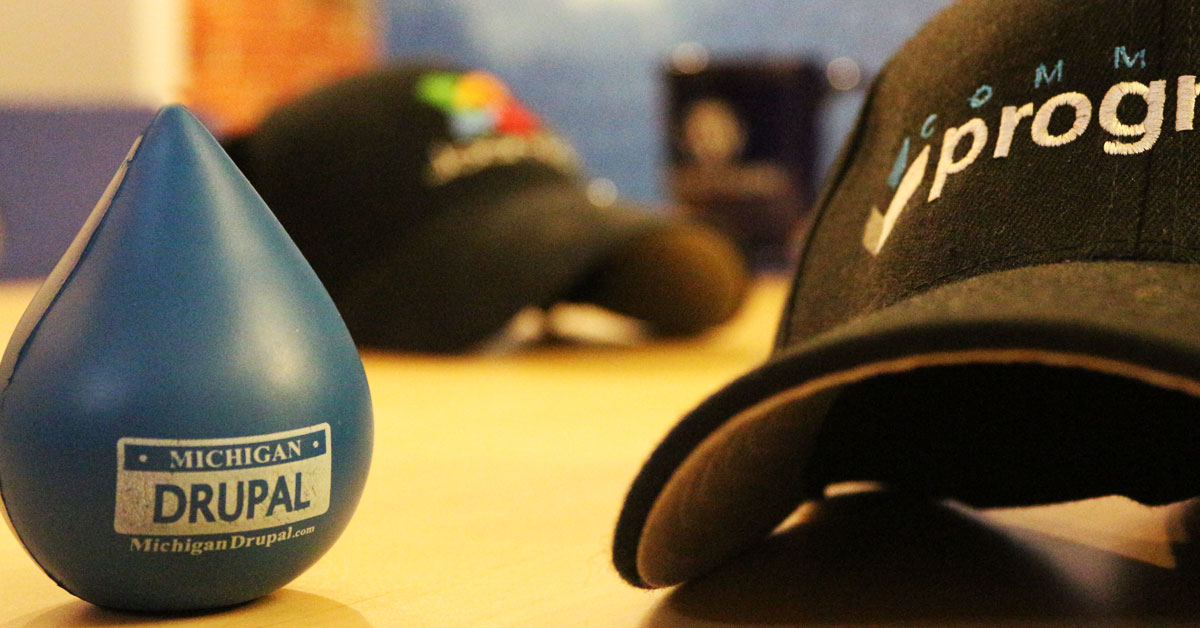 Posted by Shane Sevo on October 22, 2014
Posted by Shane Sevo on October 22, 2014
As the proud founder of the Joomla! Detroit User Group, it may come with some surprise that I am now happily employed by a Michigan based Drupal centric design firm. Read on and I will tell you the story of my open source journey.
 I still remember when I started up my first WordPress blog back in 2005; I was amazed at the functionality and ease of install I experienced. All I needed was a basic web hosting account with an available LAMP stack-- upload, unzip, click, click, done!
I still remember when I started up my first WordPress blog back in 2005; I was amazed at the functionality and ease of install I experienced. All I needed was a basic web hosting account with an available LAMP stack-- upload, unzip, click, click, done!
Overnight I was transported to the new land of open source web development. This was a FREE web design world full of out-of-the-box functionality that rivaled software solutions costing 10’s of thousands of dollars. I was hooked.
Prior to that, I had done all of my web development inside of HTML site managers like Macromedia’s Dreamweaver (circa 2003) and Adobe GoLive (may it continue to rest in peace…).
The ability to login online and perform content updates via a browser blew my mind in a pre web 2.0 universe. At that time, any request like this was relegated to costly Microsoft SharePoint intranets and extranets, and these projects were always accompanied by a painfully slow deployment full of MSDN reading hours.
But what about support? That answer came quickly in the form of community. I met a global web developer community overflowing with fellow developers who were eager to share, teach, and contribute. Support satisfaction!
Using WordPress as a blogging platform was great, but I was soon faced with my first big open source CMS question. Is Wordpress a CMS? That question may still be debatable, and it certainly was back in 2005. This forced me to consider other options for the development of community portal sites, especially those that required secure logins, memberships, calendars, and gallery functionality. Tipped off by a coworker in the IT group, I tried out Mambo. It had an easy to use administration back end with a nifty zip package installer for themes and extensions. Sold!

Then suddenly, Mambo split-- an open source coup d'etat that formed two cultures: one commercial that would continue as Mambo (and eventually die), and the other which became Joomla! would remain true to the open source ethos and live on.
“Mambo was the world's most popular CMS. At one time it was estimated that over 40% of the world's internet sites were powered by Mambo. Strange but true. Stuff happened and everything went a bit strange. Mambo all but died which is a shame. If anyone is interested in helping a small but original group revive the old girl, please email us your details.”
I picked my path, drank the koolaid, and happily built dozens of sites over the next few years on the Joomla! platform. As a freelancer, I found Joomla! to be nimble and capable at handling a wide array of clientele.
I also discovered Joomla!’s limitations. Joomla! sported a wonderful extension directory full of candy coated icons featuring a free or cheap solution to just about any web development issue I could throw at it. Need a form builder, they got 7 of them. Looking to do subscriptions with a paypal gateway, sure thing. Want to build a Facebook clone in the next week, got you covered. I thought Joomla! was destined to be the Microsoft Windows of open source CMS solutions; ubiquitous and infinitely extensible. It seemed like these small building blocks offered endless solutions, with easy one-click installs. And this was my experience, until I got into the last 20 percent of the client’s satisfaction checklist.
Joomla! was fine as a basic framework to hang other PHP extensions and modules upon, but it was these add ons that were going to end up doing all of the heavy lifting. The best of these extensions were pretty good, but not great -- and getting custom developer time was next to impossible. Because Joomla! still lacks a native content construction kit or form builder, almost every project will need some third party developer support. Many Joomla! projects turned into a programming nightmare in the final stages of forcing these third party extensions to play nice together. What started as a clean CMS build, often times felt like a tangled spaghetti mess towards the end.
I have spent the last 4 years of my open source career as a webmaster in the higher education space, with Joomla! as the primary CMS. Many days it came through with flying colors, but I have to admit that there were plenty of other days that Joomla! met its match in a request for development customization. There was usually a path forward, but not the best one and certainly not the cheapest.
The more I dug into the issues, the more I saw Drupal being deployed in higher ed to fix the very issues I was experiencing. Multisite installs, content approval workflows, LDAP integrations -- all of these were being readily handled by a properly deployed Drupal instance. The high adoption rate of Drupal in the higher education space has formed a community of shared best practices that is invaluable for an open source developer.
Colleges and universities generate a prolific amount of content each year. Faculty and research departments live by the motto “Publish or Perish”. All of that fresh content needs to be curated in unique fashion per department, there is no one size fits all solution. Drupal is the best open source CMS for creating custom content types, workflows, and taxonomies. In addition to this core publishing discipline of the university environment, there is also the consideration of recruitment via digital marketing. Modern marketing tools must be capable of sophisticated marketing automation and personalization functionality, Drupal is.
The debate between Wordpress, Joomla!, and Drupal as the “best” CMS platform is well established. My personal anecdotes confirm much of the common wisdom. WordPress is a great blogging platform, but beware when you step into deeper waters. Joomla! is a decent option for low budget small business sites without a long range development path. Drupal is still the king of robust and feature rich open source development environments.
Today I am excited to discover open source all over again. Graduating into a team of Drupal experts is the best way I can imagine to go forward with my love for open source technology and the best of breed solutions it provides. Seeing first hand how Drupal takes care of the everyday content approval and update needs for higher education is quite impressive. Our clients love Drupal because of its flexibility and capacity.
Are you finding yourself standing at the fork in the road of your development project? If so, I've stood in your shoes. Trust me; sometimes the best solution is to backup, pick the best option, and go forth confidently on the long term path to success.

